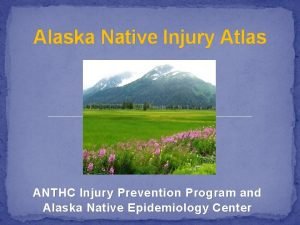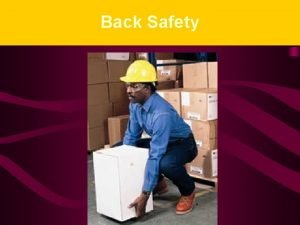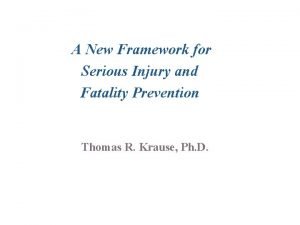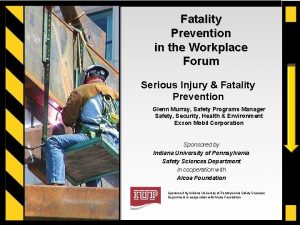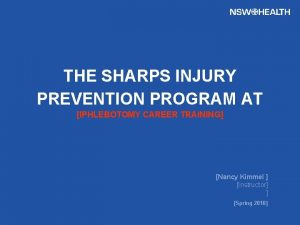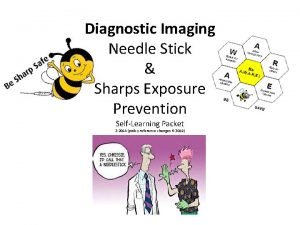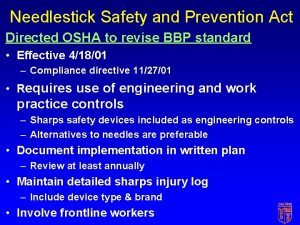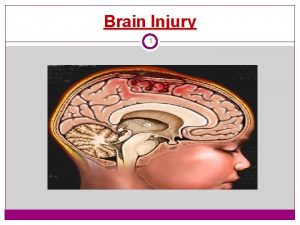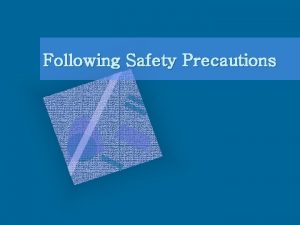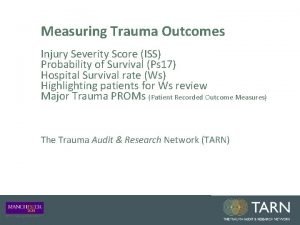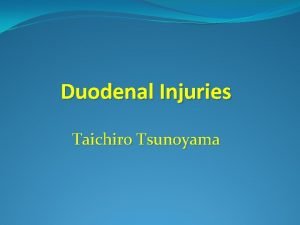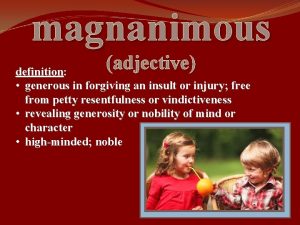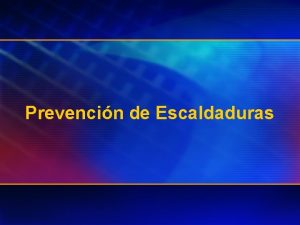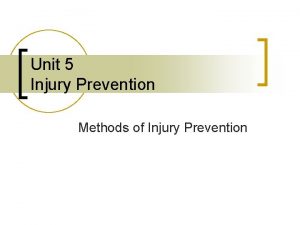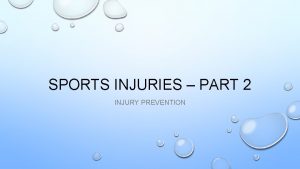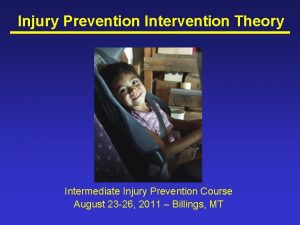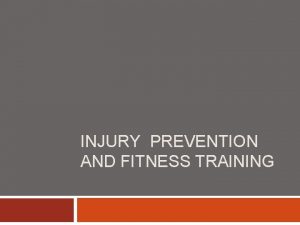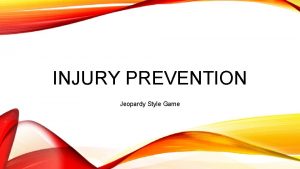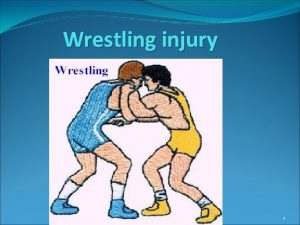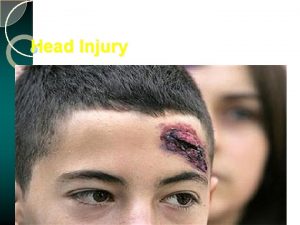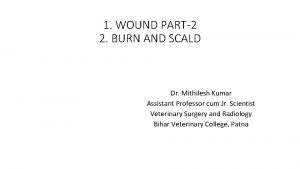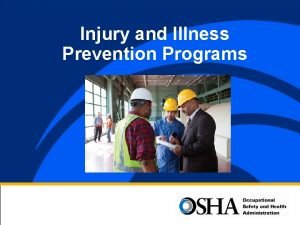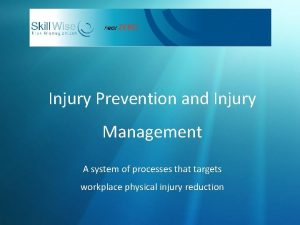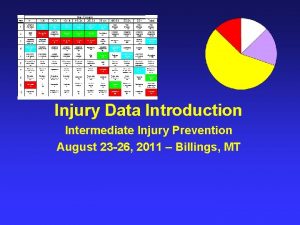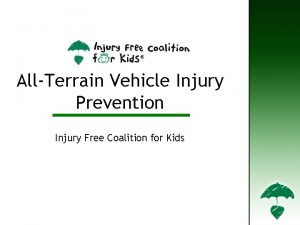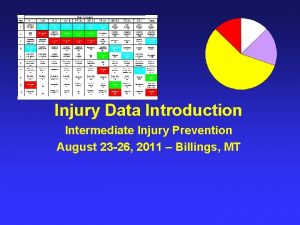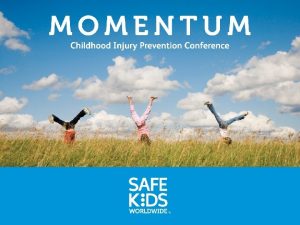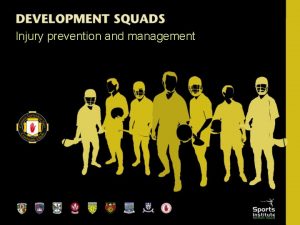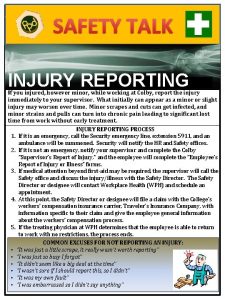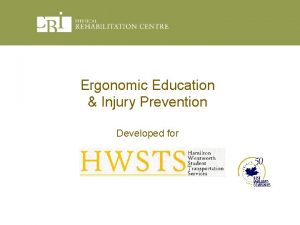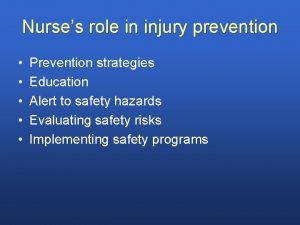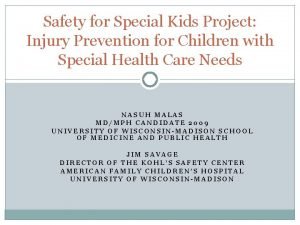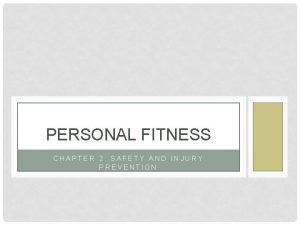Scald Injury Prevention Scald Safety Scald Prevention Developed





























- Slides: 29

Scald Injury Prevention

Scald Safety Scald Prevention Developed by: American Burn Association Burn Prevention Committee Funded by: United States Fire Administration/ Federal Emergency Management Agency

Scald Safety Fire and Burn Death and Injury Deaths 4, 000 deaths a year from fire and burns Injuries 25, 000 hospitalized in burn centers 600, 000 burn injuries treated in hospital EDs (Close to half of all burn injuries treated in hospital emergency departments and one-third of admissions to burn centers are scald injuries) (Sources: National Fire Protection Association, National Center for Health Statistics; American Burn Association, National Burn Repository, 2005)

Scald Safety What is a Scald Injury? § A scald injury occurs… – When contact with hot liquid or steam damages one or more layers of skin

Scald Safety Scald Prevention Topics § What are the main sources of scald injury? § Who are the most frequent victims? § How can scald injury be prevented? § What are the appropriate first-aid responses?

Scald Safety Frequent Scald Burn Sources § Hot tap water § Hot beverages § Hot food § Steam

Scald Safety Most Frequent Scald Injury Victims § Young children § Older adults § People with disabilities

Scald Safety Young Children and Scald Injury § 60% of all scald injuries are to young children 75% of all burns to young children are scalds (Source: National Center for Health Statistics)

Scald Safety Young Children and Scald Injury § Curiosity, imitation § Limited understanding of danger § Limited ability to react quickly to hot contact § Thin skin = deeper burn

Scald Safety Older Adults and Scald Injury § Thin skin § Reduced mobility, agility § Reduced ability to feel heat, due to health conditions or medication

Scald Safety People with Special Needs and Scald Injury § Sensory impairment § Mobility or other physical impairment § Diminished mental capacity

Scald Safety Common Sites of Scald Injury § Kitchen or dining area -Spills while handling or moving hot foods and liquids, often involving children Bathing area -Inability to remove self from hot water

Scald Safety Scald Injury Severity Factors § Length of contact with hot substance § Temperature of substance § Nature of substance – Is it thick or sticky? – Does it retain heat? § Extent of body area scalded § Location of scald

Scald Safety Protecting Children From Scalds § Household changes § Everyday precautions § Child supervision

Scald Safety Protecting Children from Scalds: Kitchen and Dining Areas Household modifications § Mark and explain a “kid-free zone” § Put away tablecloths § Use spill-resistant “travel mugs”

Scald Safety Protecting Children from Scalds: Kitchen and Dining Areas Everyday preparations § § Keep friends, relatives, and sitters informed Turn pan handles away from stove front Observe safe microwave oven practices Protect electric cooking appliances and cords

Scald Safety Protecting Children from Scalds: Kitchen and Dining Areas Scald-safe child supervision § Supervise young children at all times § Encourage use of “kid-safe” zone § Never hold a child in your arm: – While preparing or serving hot food – While drinking a hot beverage § Keep hot food and liquids high and out of the reach of young children

Scald Safety Protecting Children and Adults from Scalds: Bathing Areas Household Modifications § Establish safe hot water temperature § If this is not possible, install tempering valve or safe faucet and shower heads § Install non-slip bath, shower mats § Install grab bar in shower stall

Scald Safety Setting a Safe Hot Water Temperature Time and temperature relationship required to scald a healthy adult 155° F 68° C 1 Second 140° F 60° C 5 Seconds 127° F 52° C 1 Minute 120° F 48° C 5 Minutes 100° F 38° C Safe Bathing Temperature

Scald Safety Tap Water Scald

Scald Safety Maximum Water Temperature Standards § Recommended maximum residential standard 120°F (48°C) (U. S. Consumer Product Safety Commission) § Nursing homes and child care facilities 110°F (43°C) (Recommended and by some state or local regulations)

Scald Safety Measuring Hot Water Temperature § Run hot water up to two minutes at tap § Test temperature with cooking thermometer

Scald Safety Establishing a Safe Hot Water Temperature § If initial test temperature is above 120° F (48° C), lower heater thermostat setting § Initial test temperature below 120°F/48°C may not prove safety is constant § Retest several times until safe temperature setting is assured

Scald Safety Bathroom Scald Prevention - Equipment Direct (scald prevention) § Tempering valve – on water line § Anti-scald valves – on shower heads and faucets

Scald Safety Bathroom Scald Prevention - Equipment Indirect (fall prevention) § Grab bars § Non-slip mats in tub/shower, on floor § Shower/bath seat

Scald Safety Bathroom Scald Prevention - Precautions § For single control faucet, always turn on and off in the “cold” position § For dual control faucet, always turn “cold” faucet on first, and off last § Make sure all household members and caregivers understand these controls

Scald Safety Bathroom Scald Prevention - Behaviors § Check water temperature before placing child in tub or shower § Instruct carefully any older siblings who help bathe young children § Young children should never be left alone in the tub

Scald Safety Emergency Care of Scald Injury § Remove scald victim from source § Remove all affected clothing, diapers, shoes, etc. § Cool scalded area briefly with cool water § Cover with clean, dry covering § Do not apply creams, salves or ointments § Call 9 -1 -1

Scald Safety Scald Prevention – Some Important Points § Limited mobility and thin skin increase risk and severity for the young and old § Keep young children away when cooking, or when drinking hot beverages § Test hot water temperature and establish thermostat setting at or below 120°F/48°C
 Injury prevention, safety and first aid
Injury prevention, safety and first aid Primary prevention secondary prevention tertiary prevention
Primary prevention secondary prevention tertiary prevention Intentional injury examples
Intentional injury examples Anthc epicenter
Anthc epicenter Back injury prevention quiz answers
Back injury prevention quiz answers Serious injury and fatality prevention
Serious injury and fatality prevention Hand injury prevention
Hand injury prevention Workplace fatality prevention
Workplace fatality prevention Needle stick injury
Needle stick injury Needle stick injury prevention images
Needle stick injury prevention images Safety practices and sports injury management pictures
Safety practices and sports injury management pictures Fire hose reel signage standards
Fire hose reel signage standards Osha needlestick protocol
Osha needlestick protocol Basic safety (construction site safety orientation)
Basic safety (construction site safety orientation) Four shades function for the encs
Four shades function for the encs 00101-15 basic safety
00101-15 basic safety Personal safety vs process safety
Personal safety vs process safety Safety care training
Safety care training Safety assessment for ind safety reporting
Safety assessment for ind safety reporting Burn injury pathophysiology of burns
Burn injury pathophysiology of burns Genetic causes of cell injury
Genetic causes of cell injury A spill at parsenn bowl knee injury and recovery
A spill at parsenn bowl knee injury and recovery Thermal injury classification
Thermal injury classification Tbi concept map
Tbi concept map Freedom from danger
Freedom from danger Injury definition
Injury definition Iss score
Iss score Duodenal exclusion
Duodenal exclusion What does magnanimous mean
What does magnanimous mean Subdural hematoma concept map
Subdural hematoma concept map



